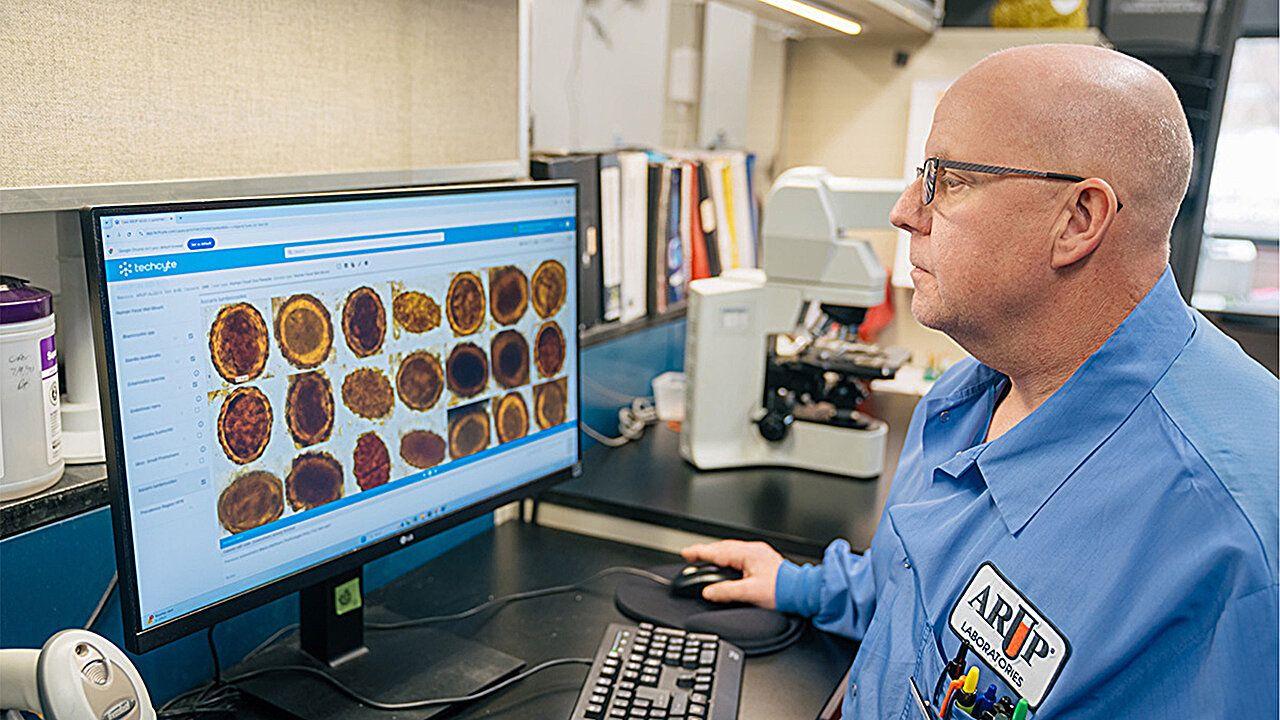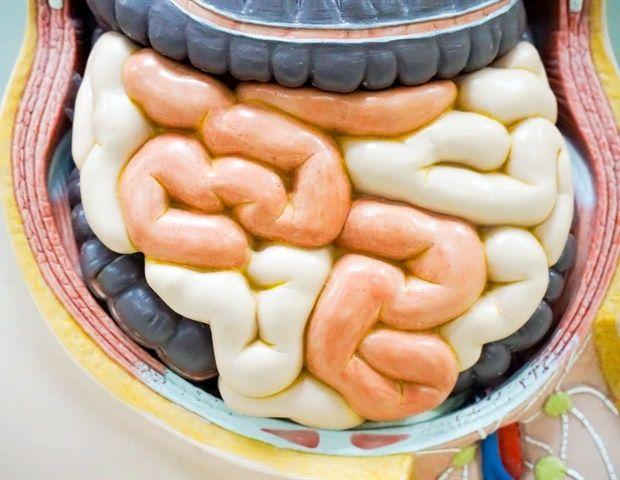AI Outperforms Humans in Detecting Intestinal Parasites, Revolutionizing Diagnostic Processes
3 Sources
3 Sources
[1]
AI tool detects intestinal parasites in stool samples more accurately than traditional methods
University of UtahOct 23 2025 Scientists at ARUP Laboratories have developed an artificial intelligence (AI) tool that detects intestinal parasites in stool samples more quickly and accurately than traditional methods, potentially transforming how labs diagnose parasitic infections around the world. Identifying parasites under the microscope has long been a painstaking task requiring highly trained experts to manually scour each sample for telltale cysts, eggs or larva. Now, a deep-learning model, known as a convolutional neural network (CNN), achieves that work with a high degree of precision, according to a study published Tuesday in the Journal of Clinical Microbiology. The researchers demonstrated that the AI system can detect parasites in wet mounts of stool with greater sensitivity than human observers, even those with years of experience hunting for these signs. It has been a groundbreaking effort, and what we've accomplished is remarkable. Our validation studies have demonstrated the AI algorithm has better clinical sensitivity, improving the likelihood that a pathogenic parasite may be detected." Blaine Mathison, lead author, ARUP's technical director of parasitology and adjunct lecturer, University of Utah's Department of Pathology A leading national reference lab, ARUP is an independent nonprofit enterprise of the University of Utah and the School of Medicine's Department of Pathology, where Mathison is an adjunct instructor. Training the AI on thousands of samples To build and test the system, ARUP and its partner, a Utah tech firm called Techcyte, trained the AI using more than 4,000 parasite-positive samples collected from laboratories across the United States, Europe, Africa and Asia. These samples represented 27 classes of parasites, including rare species, such as Schistosoma japonicum and Paracapillaria philippinensis from the Philippines, and Schistosoma mansoni from Africa. "This was really a robust study when you consider the number of organisms and positive specimens used to validate the AI algorithm," Mathison said. After discrepancy analysis, the positive agreement between AI and manual review was 98.6%. The tool also picked up 169 additional organisms that had been missed in earlier manual reviews. "We are identifying more organisms than we would without the AI, which improves diagnosis and treatment for patients who are affected," said Adam Barker, ARUP's chief operations officer. Furthermore, a limit of detection study found AI consistently found more parasites than the technologists did, even when the samples were highly diluted, suggesting the system can detect infections at earlier stages or when parasite levels are low. From innovation to implementation ARUP has pioneered the use of AI in clinical parasitology for years. In 2019, it became the world's first lab to apply AI to the trichrome portion of the ova and parasite test. In March 2025, it expanded that capability to include the wet-mount analysis-becoming the first laboratory to use AI for the entire testing process. That timing proved propitious: in August, ARUP received a record number of specimens for parasite testing. The efficiency gained through AI enabled the lab to meet demand without compromising quality. "An AI algorithm is only as good as the personnel inputting the data," Barker said. "We have phenomenal staff who have used their extensive knowledge and skills to build an exceptional AI solution that benefits not just the laboratory, but also patients." ARUP and Techcyte plan to continue expanding AI's role in diagnostic testing. Beyond parasitology, ARUP has already implemented AI to assist with Pap testing and is developing other tools to streamline lab operations and improve diagnostic accuracy. University of Utah Journal reference: Mathison, B. A., et al. (2025). Detection of protozoan and helminth parasites in concentrated wet mounts of stool using a deep convolutional neural network. Journal of Clinical Microbiology. doi.org/10.1128/jcm.01062-25
[2]
AI tool beats humans at detecting parasites in stool samples
Scientists at ARUP Laboratories have developed an artificial intelligence (AI) tool that detects intestinal parasites in stool samples more quickly and accurately than traditional methods, potentially transforming how labs diagnose parasitic infections around the world. Identifying parasites under the microscope has long been a painstaking task requiring highly trained experts to manually scour each sample for telltale cysts, eggs or larva. Now, a deep-learning model, known as a convolutional neural network (CNN), achieves that work with a high degree of precision, according to a study published in the Journal of Clinical Microbiology. The researchers demonstrated that the AI system can detect parasites in wet mounts of stool with greater sensitivity than human observers, even those with years of experience hunting for these signs. "It has been a groundbreaking effort, and what we've accomplished is remarkable," said lead author Blaine Mathison, ARUP's technical director of parasitology and an adjunct lecturer in the University of Utah's Department of Pathology. "Our validation studies have demonstrated the AI algorithm has better clinical sensitivity, improving the likelihood that a pathogenic parasite may be detected." A leading national reference lab, ARUP is an independent nonprofit enterprise of the University of Utah and the School of Medicine's Department of Pathology, where Mathison is an adjunct instructor. Training the AI on thousands of samples To build and test the system, ARUP and its partner, a Utah tech firm called Techcyte, trained the AI using more than 4,000 parasite-positive samples collected from laboratories across the United States, Europe, Africa and Asia. These samples represented 27 classes of parasites, including rare species, such as Schistosoma japonicum and Paracapillaria philippinensis from the Philippines, and Schistosoma mansoni from Africa. "This was really a robust study when you consider the number of organisms and positive specimens used to validate the AI algorithm," Mathison said. After discrepancy analysis, the positive agreement between AI and manual review was 98.6%. The tool also picked up 169 additional organisms that had been missed in earlier manual reviews. "We are identifying more organisms than we would without the AI, which improves diagnosis and treatment for patients who are affected," said Adam Barker, ARUP's chief operations officer. Furthermore, a limit of detection study found AI consistently found more parasites than the technologists did, even when the samples were highly diluted, suggesting the system can detect infections at earlier stages or when parasite levels are low. From innovation to implementation ARUP has pioneered the use of AI in clinical parasitology for years. In 2019, it became the world's first lab to apply AI to the trichrome portion of the ova and parasite test. In March 2025, it expanded that capability to include the wet-mount analysis -- becoming the first laboratory to use AI for the entire testing process. That timing proved propitious: in August, ARUP received a record number of specimens for parasite testing. The efficiency gained through AI enabled the lab to meet demand without compromising quality. "An AI algorithm is only as good as the personnel inputting the data," Barker said. "We have phenomenal staff who have used their extensive knowledge and skills to build an exceptional AI solution that benefits not just the laboratory, but also patients." ARUP and Techcyte plan to continue expanding AI's role in diagnostic testing. Beyond parasitology, ARUP has already implemented AI to assist with Pap testing and is developing other tools to streamline lab operations and improve diagnostic accuracy.
[3]
AI Tool Beats Humans at Detecting Parasites in Stool Samples, Utah Study Finds | Newswise
Newswise -- Scientists at ARUP Laboratories have developed an artificial intelligence (AI) tool that detects intestinal parasites in stool samples more quickly and accurately than traditional methods, potentially transforming how labs diagnose parasitic infections around the world. Identifying parasites under the microscope has long been a painstaking task requiring highly trained experts to manually scour each sample for telltale cysts, eggs or larva. Now, a deep-learning model, known as a convolutional neural network (CNN), achieves that work with a high degree of precision, according to a study published Tuesday in the Journal of Clinical Microbiology. The researchers demonstrated that the AI system can detect parasites in wet mounts of stool with greater sensitivity than human observers, even those with years of experience hunting for these signs. "It has been a groundbreaking effort, and what we've accomplished is remarkable," said lead author Blaine Mathison, ARUP's technical director of parasitology and an adjunct lecturer in the University of Utah's Department of Pathology. "Our validation studies have demonstrated the AI algorithm has better clinical sensitivity, improving the likelihood that a pathogenic parasite may be detected." A leading national reference lab, ARUP is an independent nonprofit enterprise of the University of Utah and the School of Medicine's Department of Pathology, where Mathison is an adjunct instructor. To build and test the system, ARUP and its partner, a Utah tech firm called Techcyte, trained the AI using more than 4,000 parasite-positive samples collected from laboratories across the United States, Europe, Africa and Asia. These samples represented 27 classes of parasites, including rare species, such as Schistosoma japonicum and Paracapillaria philippinensis from the Philippines, and Schistosoma mansoni from Africa. "This was really a robust study when you consider the number of organisms and positive specimens used to validate the AI algorithm," Mathison said. After discrepancy analysis, the positive agreement between AI and manual review was 98.6%. The tool also picked up 169 additional organisms that had been missed in earlier manual reviews. "We are identifying more organisms than we would without the AI, which improves diagnosis and treatment for patients who are affected," said Adam Barker, ARUP's chief operations officer. Furthermore, a limit of detection study found AI consistently found more parasites than the technologists did, even when the samples were highly diluted, suggesting the system can detect infections at earlier stages or when parasite levels are low. ARUP has pioneered the use of AI in clinical parasitology for years. In 2019, it became the world's first lab to apply AI to the trichrome portion of the ova and parasite test. In March 2025, it expanded that capability to include the wet-mount analysis -- becoming the first laboratory to use AI for the entire testing process. That timing proved propitious: in August, ARUP received a record number of specimens for parasite testing. The efficiency gained through AI enabled the lab to meet demand without compromising quality. "An AI algorithm is only as good as the personnel inputting the data," Barker said. "We have phenomenal staff who have used their extensive knowledge and skills to build an exceptional AI solution that benefits not just the laboratory, but also patients." ARUP and Techcyte plan to continue expanding AI's role in diagnostic testing. Beyond parasitology, ARUP has already implemented AI to assist with Pap testing and is developing other tools to streamline lab operations and improve diagnostic accuracy. The research was published under the title, "Detection of protozoan and helminth parasites in concentrated wet mounts of stool using a deep convolutional neural network," appearing Oct. 21 in the Journal of Clinical Microbiology. Co-authors include several other scientists at ARUP and Techcyte. Until recently, senior author Marc Couturier served as ARUP's head of medical operations for microbiology and immunology and was a U professor of pathology. He is now the medical director of clinical microbiology at NorDx, Maine's top clinical lab. Now based in Orem, Utah, Techcyte, Inc. was founded as a university startup in 2013 to commercialize discoveries led by Mohamed Salama, then an ARUP medical director and U pathology professor. It has since evolved into a leader in AI-powered digital diagnostics.
Share
Share
Copy Link
Scientists at ARUP Laboratories have developed an AI tool that detects intestinal parasites in stool samples more accurately than traditional methods. This breakthrough could transform parasitic infection diagnosis worldwide, improving efficiency and accuracy in clinical parasitology.
AI Revolutionizes Parasite Detection in Stool Samples
Scientists at ARUP Laboratories have developed a groundbreaking artificial intelligence (AI) tool that surpasses traditional methods in detecting intestinal parasites in stool samples. This innovation has the potential to transform parasitic infection diagnosis worldwide, offering improved speed and accuracy
1
.
Source: News-Medical
The Power of Deep Learning in Parasitology
The AI system, based on a convolutional neural network (CNN), has demonstrated superior sensitivity in detecting parasites compared to human observers, even those with extensive experience. Lead author Blaine Mathison, ARUP's technical director of parasitology, emphasized the remarkable nature of this achievement
2
.Robust Training and Validation
To develop and test the AI system, ARUP collaborated with Utah-based tech firm Techcyte. The AI was trained using over 4,000 parasite-positive samples from laboratories across the globe, representing 27 classes of parasites, including rare species. This comprehensive approach ensured a robust validation process
3
.
Source: Medical Xpress
Impressive Performance Metrics
The AI tool demonstrated an impressive 98.6% positive agreement with manual review after discrepancy analysis. Moreover, it identified 169 additional organisms that were missed in earlier manual reviews. The system's ability to detect parasites even in highly diluted samples suggests it can identify infections at earlier stages or when parasite levels are low
1
.Related Stories
Pioneering AI in Clinical Parasitology
ARUP has been at the forefront of AI application in clinical parasitology. In 2019, it became the world's first lab to use AI for the trichrome portion of the ova and parasite test. By March 2025, ARUP expanded this capability to include wet-mount analysis, making it the first laboratory to employ AI for the entire testing process
2
.Practical Impact and Future Directions
The timing of this innovation proved crucial when ARUP received a record number of specimens for parasite testing in August 2025. The AI-driven efficiency allowed the lab to meet the increased demand without compromising quality. Adam Barker, ARUP's chief operations officer, highlighted the importance of skilled personnel in developing the AI algorithm
3
.ARUP and Techcyte plan to expand AI's role in diagnostic testing beyond parasitology. The lab has already implemented AI to assist with Pap testing and is developing additional tools to streamline operations and enhance diagnostic accuracy across various medical fields
1
.References
Summarized by
Navi
[1]
[2]
Related Stories
Recent Highlights
1
Google launches Gemini 3 Flash as default AI model, delivering speed with Pro-grade reasoning
Technology

2
OpenAI launches GPT Image 1.5 as AI image generator war with Google intensifies
Technology

3
OpenAI launches ChatGPT app store, opening doors for third-party developers to build AI-powered apps
Technology








